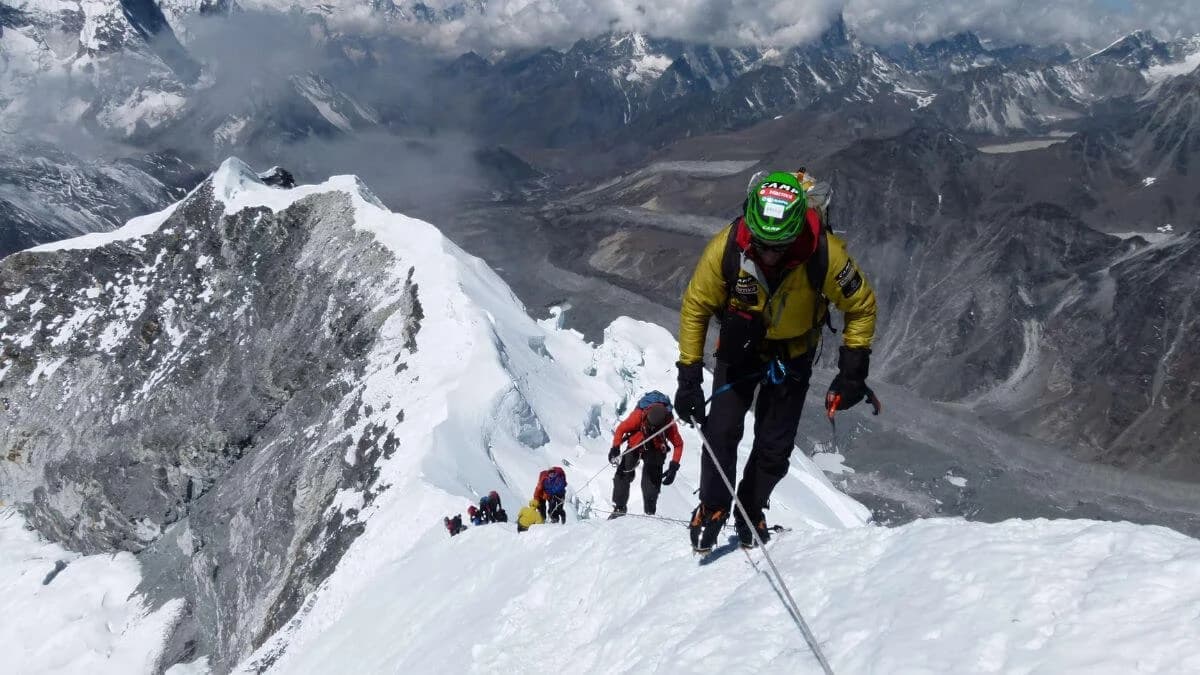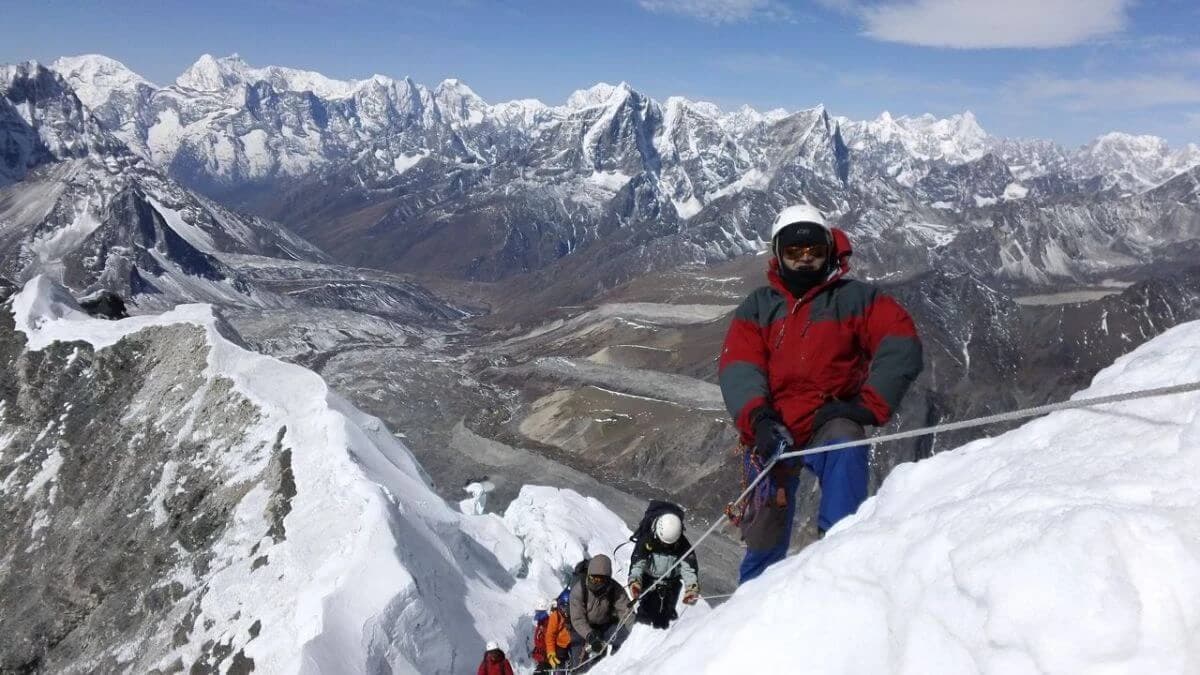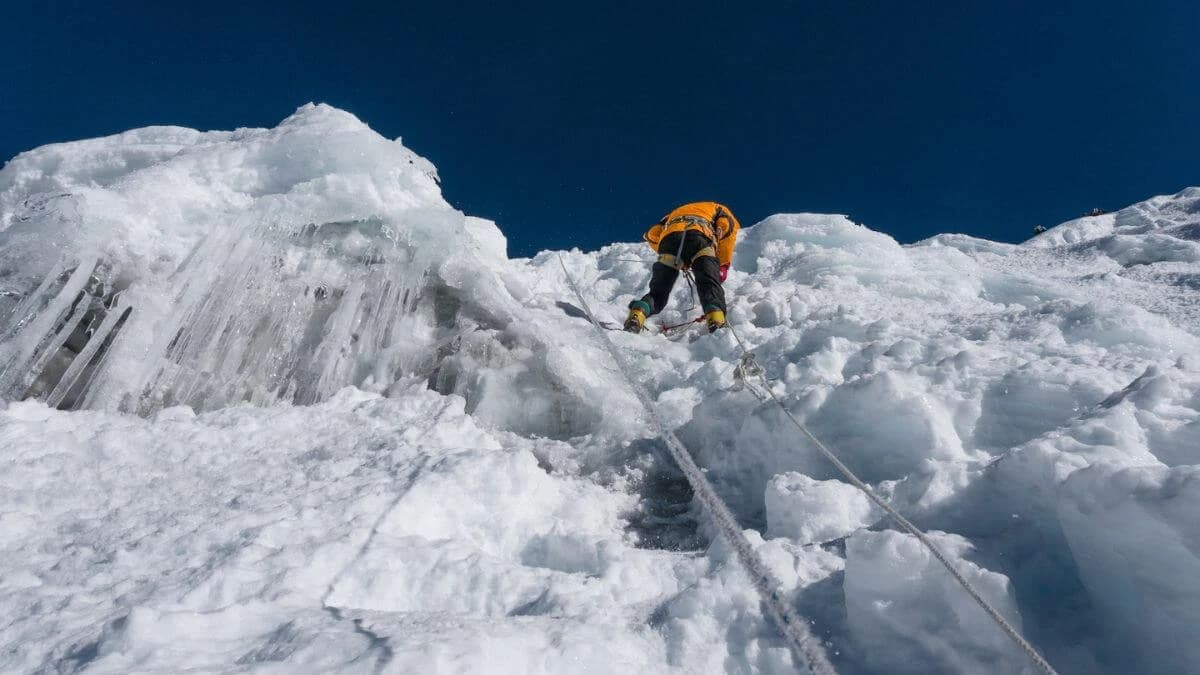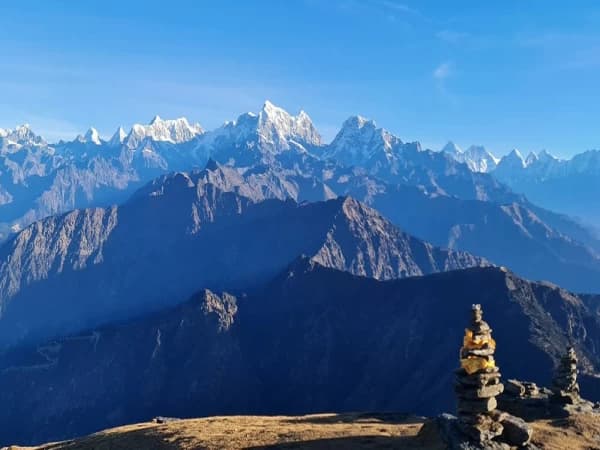The Island Peak Climbing is one of Nepal's most desired climbing adventures. This expedition is ideal for energetic and physically fit climbers passionate about adventure. Are you interested in climbing island peaks in Nepal? Discover everything you need to know about this thrilling journey, including preparation tips, climbing routes, and what to expect on the climb.
Island Peak Climbing Overview
Island Peak, also known as Imja Tse, is a famous climbing peak in Nepal's Everest region. It stands at 6,189 meters (20,305 feet) and is one of Nepal's most highly desired climbing peaks. The peak emerges from the southern edge of the Lhotse Glacier, offering a stunning panoramic view from its summit. Beautiful views will be presented, including a close-up of Mount Everest. It offers spectacular views of the Himalayan peaks, including Lhotse, Nuptse, Makalu, and, of course, Everest itself. The climb typically combines trekking through the beautiful Khumbu region with a technical ascent of Island Peak.
The journey begins with an exhilarating flight from Kathmandu to Lukla, followed by a trek through the enchanting landscapes of the Khumbu region. The route takes you through scenic villages like Phakding, Namche, Tengboche, and Dingboche before reaching Chhukung and, ultimately, Island Peak Base Camp. The 22-day itinerary is dedicated to practicing climbing techniques with proper gear, culminating in the summit attempt the following day.
Island Peak Climbing Highlights
- Summit Island Peak (6,189m/20,305 ft) – A thrilling Himalayan climbing experience.
- Scenic Flight to Lukla – Enjoy breathtaking views of the Himalayas.
- Trek through the Everest Region – Experience iconic locations like Namche Bazaar, Tengboche, and Dingboche.
- Acclimatization Days – Well-planned stops to adjust to the high altitude.
- Visit Tengboche Monastery – One of the most important spiritual sites in the region.
- Pre-Climb Training at Base Camp – Learn mountaineering techniques from expert guides.
- Stunning Views – Witness Mt. Everest, Lhotse, Ama Dablam, and other towering peaks.
- Cultural Experience – Interact with Sherpa communities and learn about their traditions.
- Sense of Accomplishment – Successfully summiting a 6,000m peak is a remarkable achievement!



-(1).webp&w=1200&q=75&dpl=dpl_2PwU5ZDv8uoJ3KrzEVbz8N547HgX)

.webp&w=1200&q=75&dpl=dpl_2PwU5ZDv8uoJ3KrzEVbz8N547HgX)